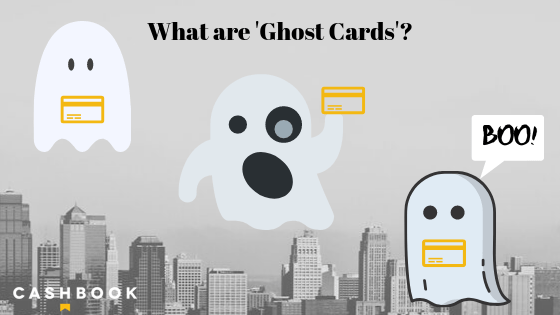September 13th, 2019
What are ‘Ghost Cards’ and how are they used?
Ghost cards are a name given to a specific kind of bank credit card or purchasing method. They are not a real plastic card like the ones we are acquainted with. Hence the name ‘ghost’, it is precisely a credit card number that is specific to each department within a company. Employees in a specific department can make purchases using this one number. All transactions are then charged to a high-limit charge account. It means that multiple people in each department can make purchases using the same number. Below we are going to look at the pros & cons of ghost cards for large organizations.
Advantages of use in large organizations.
- Suitable if you have a high number of transactions across multiple departments.
- Eliminates the need for every person to have an individual credit card.
- The company is made aware of purchases in real-time.
- Eliminates the need for employee personal spending and the time spent reimbursing them.
- It’s much easier to monitor spend in each department.
- Suppliers can provide a list of purchases made, so that reconciliations can be automated easily through an ERP or financial software. Specific transaction information is included to facilitate this automation.
- The bank provides an annual rebate to customers that use ghost cards.
- If the purchasing volumes are high enough, there can be substantial cost savings.
- Eliminates the usage and associated costs of checks for both the organization and the banks, resulting in a win-win.
Disadvantages of use in large organizations
- Former employees may still attempt to use the ghost card number. This increases the possibility of fraud. If it was an individual card issued to a former employee it would be deactivated.
- Your supplier needs to verify the identity of each buyer in the company, to see if they have the correct authorization to make purchases.
- Purchase volumes need to be a high enough level to realize the added benefits of usage.
- Some ghost cards may incur a higher rate of interest on purchases.
As you can see, there are a lot more advantages to using ghost cards in large organizations than disadvantages. The ghost card transaction files can be uploaded to the banking software and then processed easily through Cashbook. This eliminates a lot of multiple batches of invoice matching, all your monthly data is included in one single file from each department. Below are the key benefits of using ghost cards.
Key benefits of using Ghost Cards.
- Banks provide cash rebates to customers at the end of the year. Depending on your purchasing volumes this rebate may run into the tens of thousands.
- Reduction of invoices for individual purchases and cards, and the added costs of processing them.
- Multiple employees in each department can become purchasers.
- Improved purchasing efficiency for the organization.
- The ghost card number can be securely stored by your suppliers. So, the buyer doesn’t need to know the number to place orders with them.
- Ghost cards can be limited to specific vendors or even specific products.
- Easier to keep control of stock levels by suspending purchase of fully-stocked items.
- One list of purchases from each supplier, assisting quicker automation of reconciliations.





